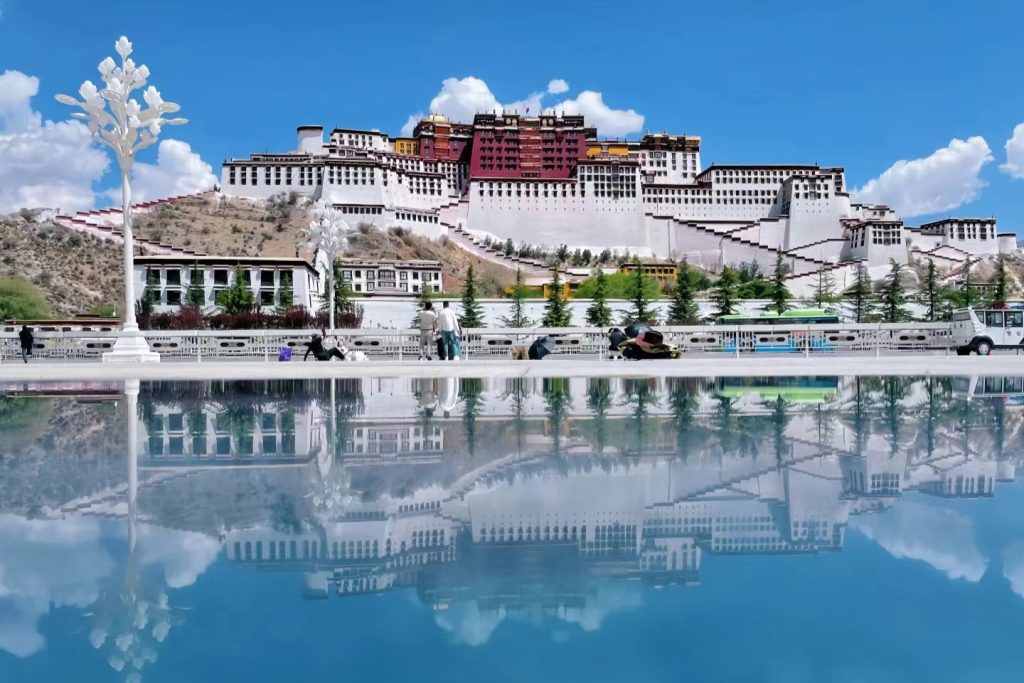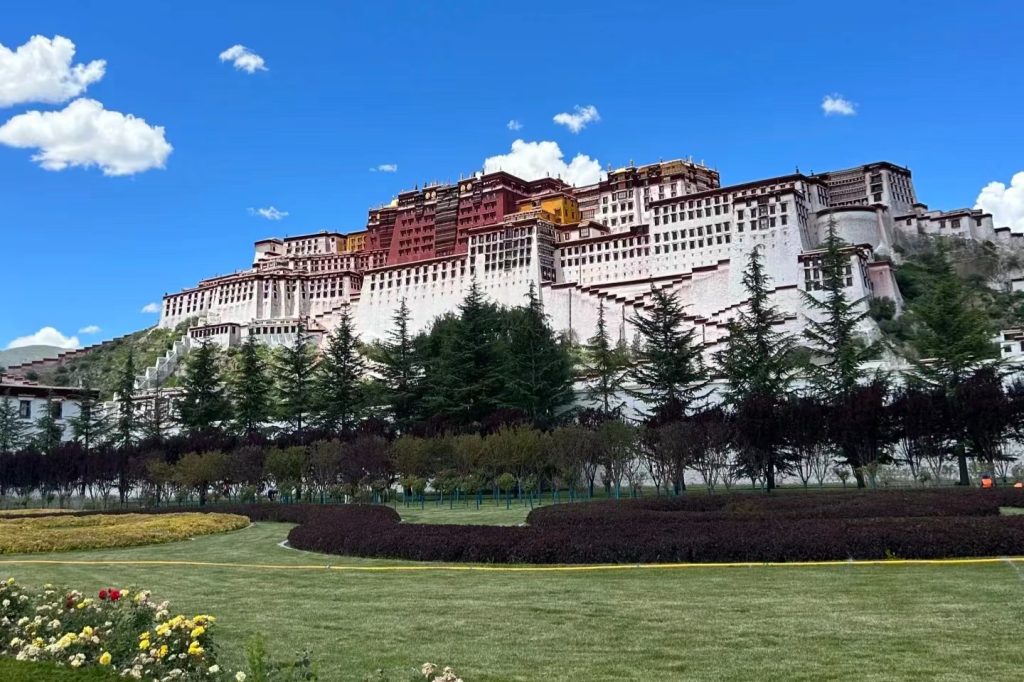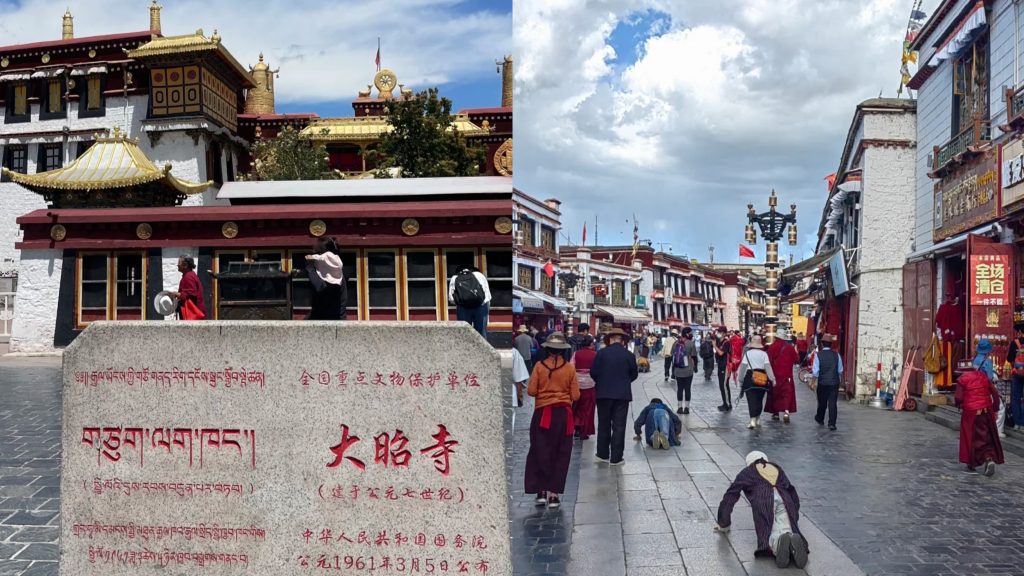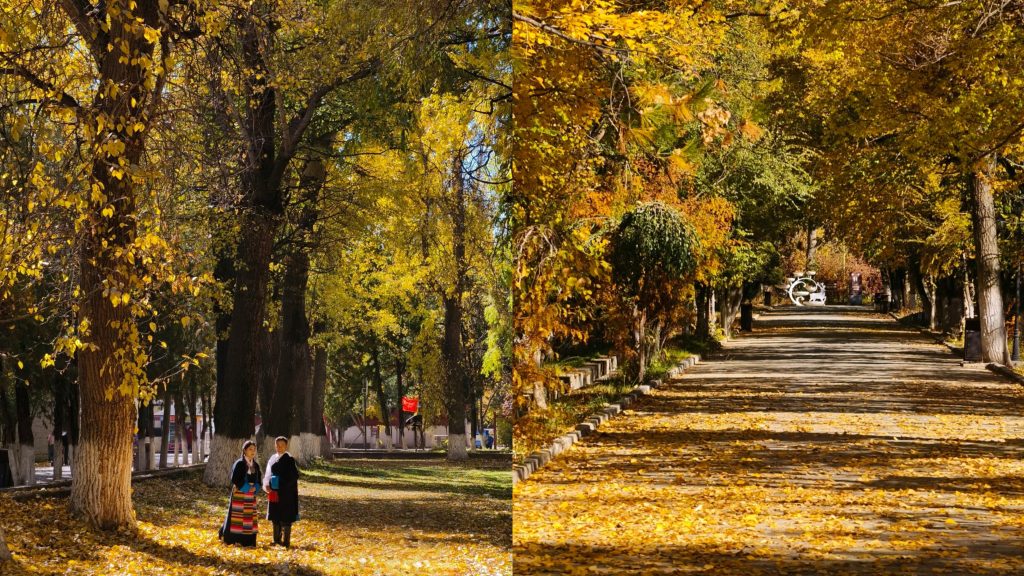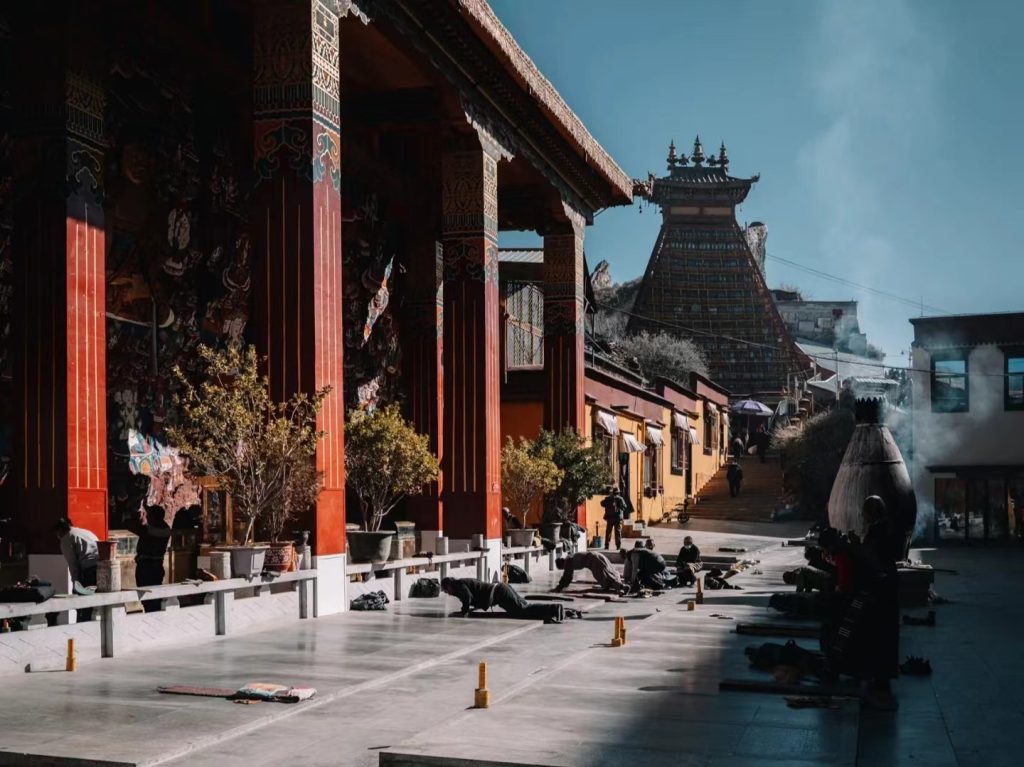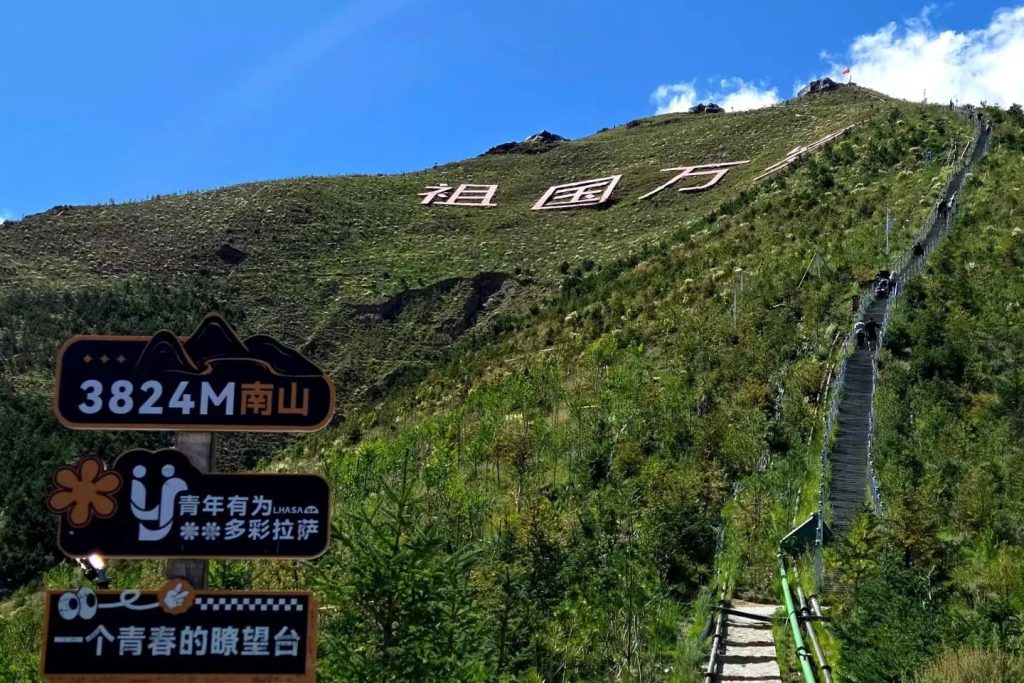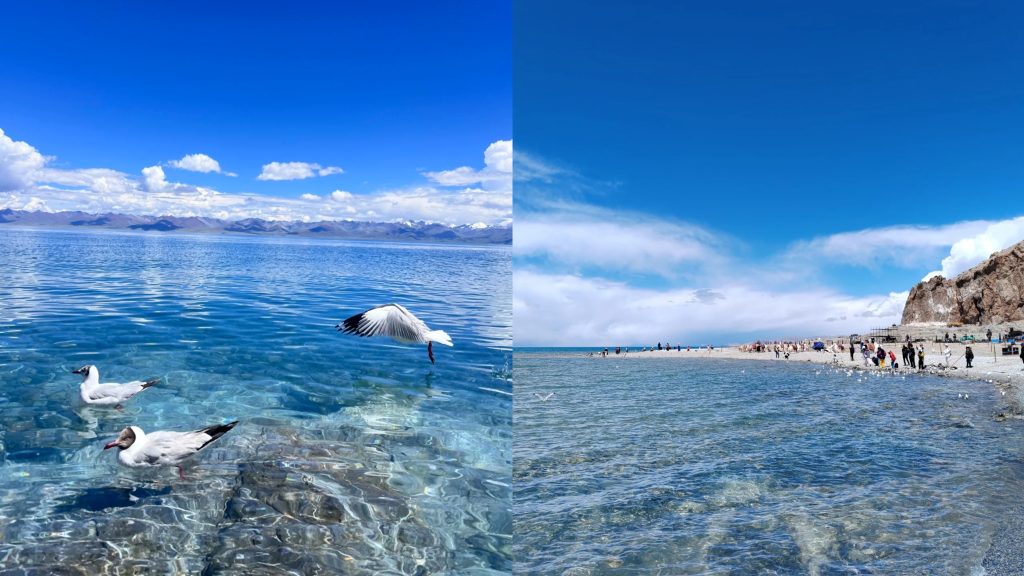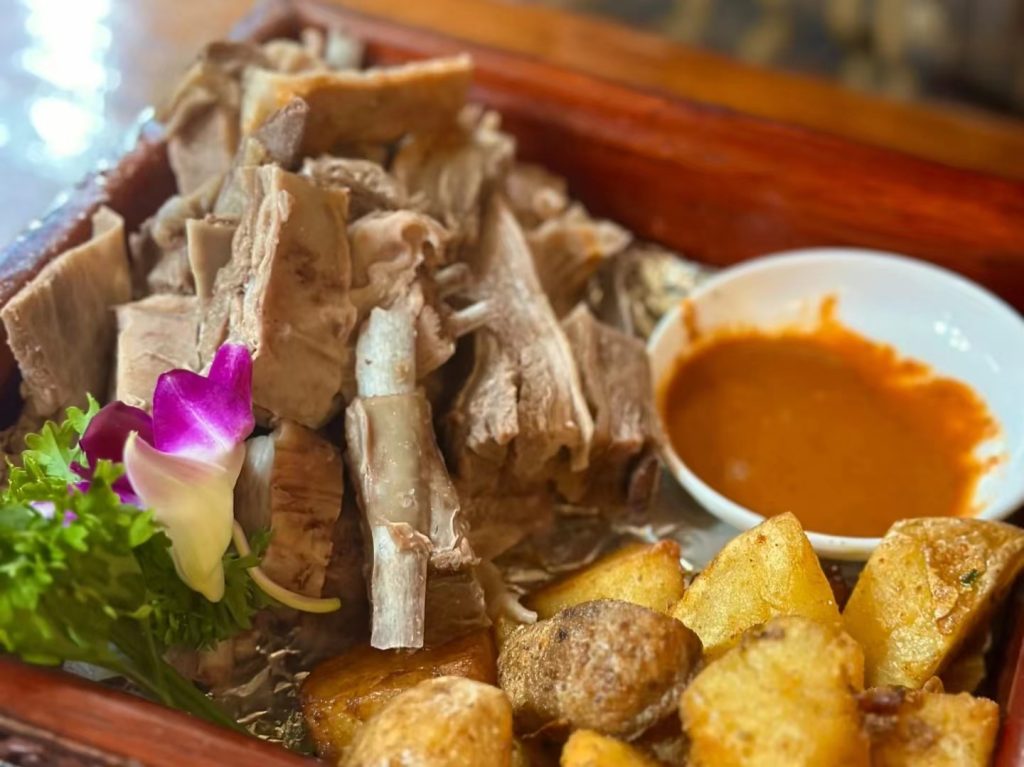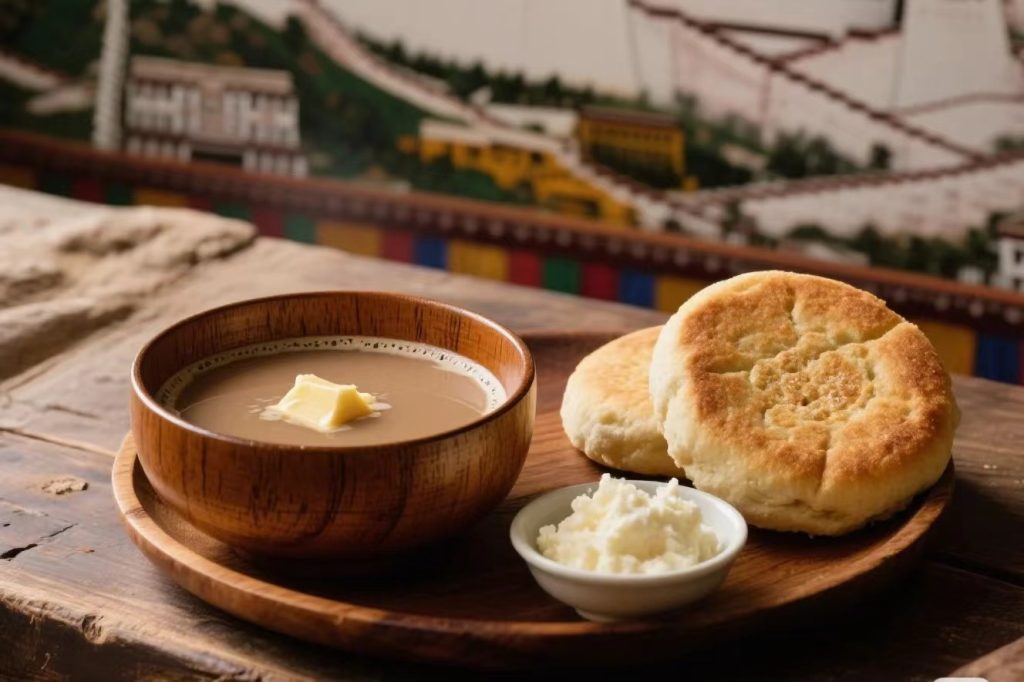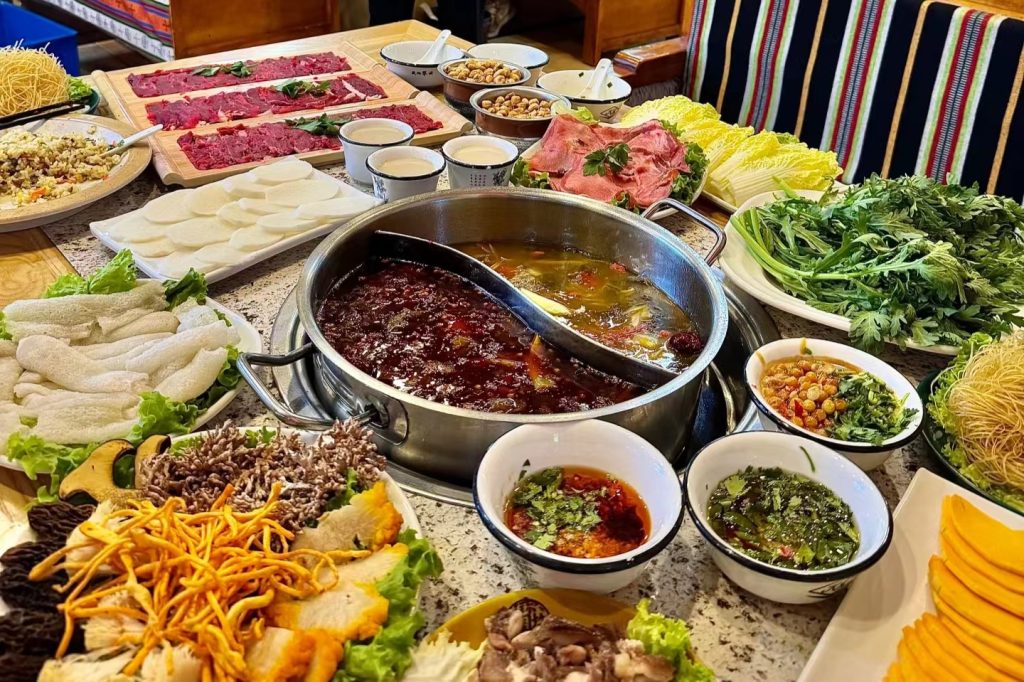If this is your very first journey to Tibet, there’s no better place to begin than Lhasa. Perched high on the Himalayan plateau at an elevation of over 3,600 meters (11,800 feet), Lhasa is known as the “City of Sunshine” for its year-round bright skies. From the towering silhouette of the Potala Palace to the devoted prayers at Jokhang Temple, and the pilgrims circling Barkhor Street with their prayer wheels, the city immediately immerses you in a world unlike anywhere else. Starting here not only allows you to gradually adapt to the high altitude, but also introduces you to the cultural and spiritual core of Tibet—an ideal opening to your wider Tibet travel guide.
Best Time to Visit Tibet and Lhasa
Spring & Summer in Tibet (May–August)
- May–June (early summer): Pleasant temperatures, minimal rainfall, and crystal-clear views of the snowcapped peaks.
- July–August (summer, rainy season): Warmest period, with daytime highs around 20°C (68°F). Rain usually falls at night, leaving days mostly sunny.
Autumn – The Ideal Season (September–October)
Widely regarded as the best time to visit Tibet. The skies are vivid blue, the weather stable, and the scenery—snow mountains, lakes, temples—at its most photogenic.
Tips: ∙ Expect large day-night temperature swings. T-shirts are fine during the day, but evenings may require a down jacket.
∙ UV protection is essential. Even on cloudy days, sunscreen, sunglasses, and a hat are a must.
Winter Travel in Lhasa (November–April)
Cold mornings and evenings, but with fewer tourists and unique snow-draped landscapes. For those who can handle the chill, it offers a quieter and more intimate Tibet cultural experience.
Entry Permits and Health Tips for First-Time Visitors
Tibet Travel Permit & Border Passes
- Foreign travelers must obtain a Tibet Travel Permit, usually arranged through a registered Chinese travel agency.
- Independent travel is restricted; most visitors are required to join a tour or have a licensed guide.
- Additional permits are necessary for sensitive areas such as Everest Base Camp or the remote Ngari region.
Acclimatizing to High Altitude
- Rest first: At 3,650m (12,000ft), oxygen levels are only about 60% of sea level. Rest during the first couple of days.
- Stay hydrated, limit alcohol and smoking.
- Bring medication for altitude sickness (e.g., Diamox) and basic pain relievers.
- In case of severe headaches or breathing problems, seek medical help immediately or descend to lower altitudes.
Must-See Attractions on Your Lhasa Tibet Itinerary
1.Potala Palace – Symbol of Tibet
An iconic landmark of Tibet, the Potala Palace rises like a massive fortress of white and red walls. At sunrise, its walls glow brilliantly, while sunset bathes the red palace in golden hues. Inside, you’ll encounter sacred murals, relics, and centuries of history.
Highlights: UNESCO World Heritage Site blending palace, fortress, and monastery.
Tips: Reserve tickets in advance (they sell out quickly in peak season).
The best photo spots: Yaowang Mountain viewpoint or Potala Square.
Pace yourself on the stairs—altitude makes climbing more difficult.
2. Jokhang Temple & Barkhor Street
The golden roof glistens in the sun, while inside, incense smoke swirls around sacred statues and murals. The most striking sight is the thousands of pilgrims prostrating themselves on the square outside, their devotion deeply moving.
Highlights: The most sacred temple in Tibetan Buddhism, home to a life-sized statue of the 12-year-old Buddha.
Tips: Visit in the morning to witness the atmosphere of prayer. From the rooftop, you’ll enjoy sweeping views of Barkhor Street and the distant Potala Palace.
Encircling Jokhang Temple, this bustling street is both a pilgrimage route and a vibrant marketplace. Shops overflow with silver jewelry, thangkas, prayer beads, and Tibetan knives, while the aroma of butter tea fills the air.
3. Sera Monastery
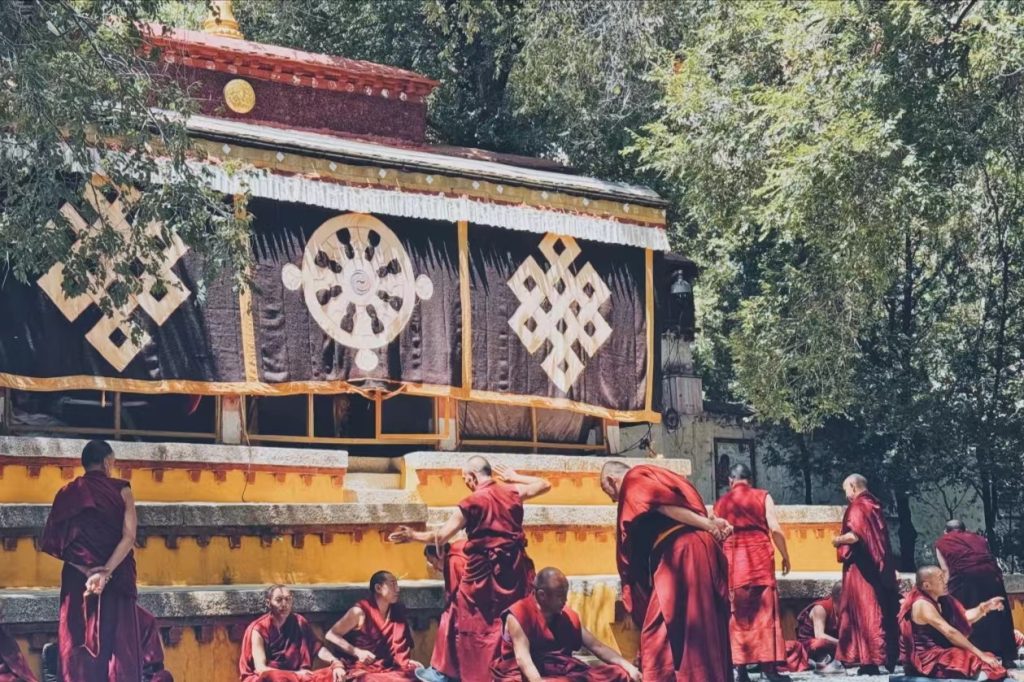 Famed for its lively monk debates, held most afternoons around 3 p.m., where monks challenge each other with gestures, shouts, and rhythmic handclaps. The monastery also holds beautiful murals and statues.
Famed for its lively monk debates, held most afternoons around 3 p.m., where monks challenge each other with gestures, shouts, and rhythmic handclaps. The monastery also holds beautiful murals and statues.
Highlights: More intimate than Potala or Jokhang, offering a glimpse into everyday monastic life.
4. Norbulingka (Summer Palace)
Meaning “Treasure Garden,” this was the summer residence of the Dalai Lamas. Shaded by trees and dotted with ponds, palaces, and frescoes, it is often called the “Summer Palace of Tibet.”
Highlights: A peaceful retreat compared to the grandeur of Potala Palace.
5. Yaowang Mountain (Medicine King Hill)
A small hill offering the most classic panorama of the Potala Palace. At sunset, the golden light makes the palace glow ethereally.
Highlights: Affordable entry, great for photography.
6. Nanshan Park
A quieter spot popular with locals. From its slopes, you can see the whole city, framed by distant snowcapped peaks. In summer and autumn, the meadows bloom with wildflowers.
7. Namtso Lake – Tashi Peninsula
One of Tibet’s three holy lakes, sitting at 4,718m (15,480ft). The sapphire-blue waters stretch endlessly, surrounded by snowcapped mountains. On the Tashi Peninsula, colorful prayer flags flutter in the wind, and stone cairns dot the landscape.
Highlights: Ideal for sunrise and sunset photography. Summer and autumn also allow for lakeside camping and stargazing.
Tibet Food and Drinks You Can’t Miss
Staples
- Tsampa: Roasted barley flour mixed with butter tea or cheese—Tibet’s traditional daily food.
- Tibetan noodles: Thin noodles in beef or mutton broth, topped with scallions and chili.
- Hand-pulled lamb or yak meat: Served plain with chili powder or salt to savor the natural flavors.
Drinks
- Butter tea: Rich and salty, made from yak butter, tea, and salt—an acquired taste but excellent for energy at high altitude.
- Barley wine (chang): Mildly sweet, low in alcohol, and essential at festivals.
Snacks and Specialties
- Air-dried beef or mutton: Chewy and flavorful.
- Tibetan hotpot: Featuring yak or lamb with local mushrooms in a mild broth.
- Yak yogurt: Thick and tangy, often sweetened with honey.
- Yak meat dumplings (momo): Juicy, savory, and beloved by locals.
Travel Tips and Cultural Etiquette for a Deeper Tibet Cultural Experience
Respecting Local Customs
- Show respect in temples: hats off, no photography of sacred statues unless permitted.
- Always walk clockwise around temples, stupas, and holy lakes.
- Avoid giving money to begging children; small snacks or school supplies are better.
Practical Advice
- Food: Western dining is limited; Tibetan and Sichuan cuisine dominate. Bring snacks or energy bars.
- Payment: Mobile payment apps like WeChat and Alipay are common; cash is still useful.
- Environment: The plateau is ecologically fragile—leave no litter, and don’t take stones, prayer flags, or artifacts as souvenirs.
Visiting Lhasa offers not only breathtaking landscapes but also a profound journey into Tibetan spirituality and culture. Whether you’re seeking sacred monasteries, epic mountain views, or authentic Tibet cultural experiences, starting your trip in Lhasa ensures your first steps in Tibet are unforgettable.
